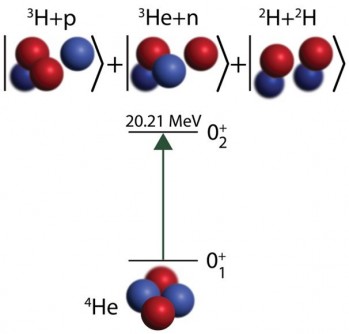The Science
Newswise — In physics, predictions from theory and the results of experiments don’t always agree. Understanding why is an important part of how physicists improve their understanding of the universe. But these disagreements can also occur because of the difficulty of analyzing the results of experiments or theoretical calculations. In early 2023, scientists published a new measurement testing the strong nuclear force that binds protons and neutrons. The experiment involved the way the nucleus of a helium atom, also called an alpha particle, gains energy to become excited.
The Impact
The earlier experimental paper suggested a puzzle that could not be solved with existing theoretical methods. This means the finding might have indicated physics not accounted for by the contemporary nuclear models. Findings this big need careful evaluation. The new theoretical calculations described here used a novel quantum mechanics computing code to explain the experimental findings. This new result closes the apparent gap between theory and experiment.
Summary
In a recent study, theorists from the Chinese Academy of Sciences in Lanzhou, Grand Accelerateur National d’Ions Lourds in France, and the Facility for Rare Isotope Beams (FRIB) employed a novel quantum mechanics computing code to explain the results of a recent precise experiment used to determine how a helium-4 nucleus (an alpha particle) gains energy to become excited in what is known as a “monopole transition.” According to the study’s results, the excited state at energy 20.21 MeV, which is unstable and decays by emitting a proton, is an intricate combination of binary clusters: hydrogen-3 and a proton, helium-3 and a neutron, and two hydrogen-2 nuclei.
The no-core Gamow shell model used in this new analysis can describe how an alpha particle undergoes a transition to its first excited state. By considering the excitation process, and the structure of the excited state as a combination of multiple cluster configurations, the new result explains the previous experimental findings and shows that the mystery surrounding the excited state has been solved.
Funding
This material is based on work supported by the Department of Energy Office of Science, Office of Nuclear Physics.
